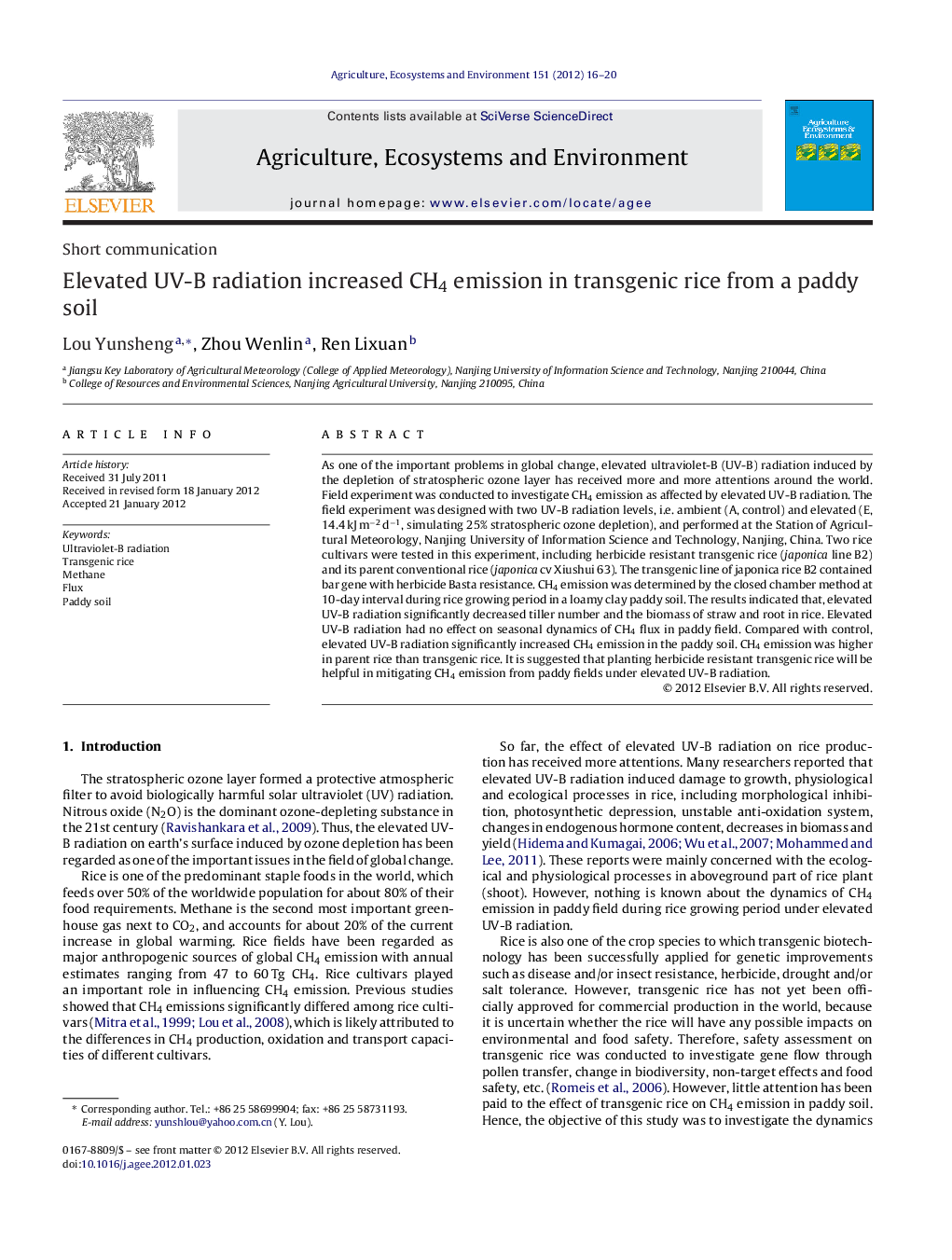| Article ID | Journal | Published Year | Pages | File Type |
|---|---|---|---|---|
| 2414545 | Agriculture, Ecosystems & Environment | 2012 | 5 Pages |
As one of the important problems in global change, elevated ultraviolet-B (UV-B) radiation induced by the depletion of stratospheric ozone layer has received more and more attentions around the world. Field experiment was conducted to investigate CH4 emission as affected by elevated UV-B radiation. The field experiment was designed with two UV-B radiation levels, i.e. ambient (A, control) and elevated (E, 14.4 kJ m−2 d−1, simulating 25% stratospheric ozone depletion), and performed at the Station of Agricultural Meteorology, Nanjing University of Information Science and Technology, Nanjing, China. Two rice cultivars were tested in this experiment, including herbicide resistant transgenic rice (japonica line B2) and its parent conventional rice (japonica cv Xiushui 63). The transgenic line of japonica rice B2 contained bar gene with herbicide Basta resistance. CH4 emission was determined by the closed chamber method at 10-day interval during rice growing period in a loamy clay paddy soil. The results indicated that, elevated UV-B radiation significantly decreased tiller number and the biomass of straw and root in rice. Elevated UV-B radiation had no effect on seasonal dynamics of CH4 flux in paddy field. Compared with control, elevated UV-B radiation significantly increased CH4 emission in the paddy soil. CH4 emission was higher in parent rice than transgenic rice. It is suggested that planting herbicide resistant transgenic rice will be helpful in mitigating CH4 emission from paddy fields under elevated UV-B radiation.
► Elevated UV-B radiation significantly decreased tiller number and biomass production in rice. ► Elevated UV-B radiation significantly increased CH4 emission. ► CH4 emission was higher in parent rice than transgenic rice under elevated UV-B radiation.
